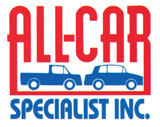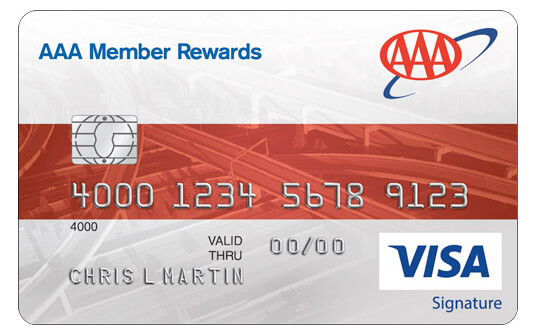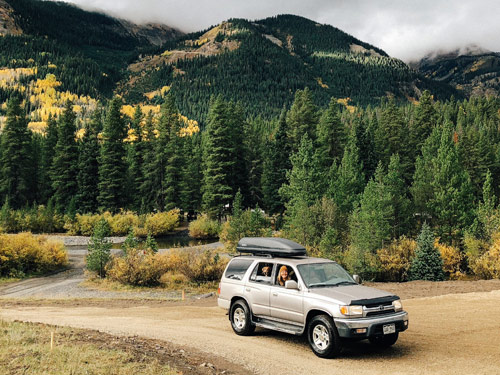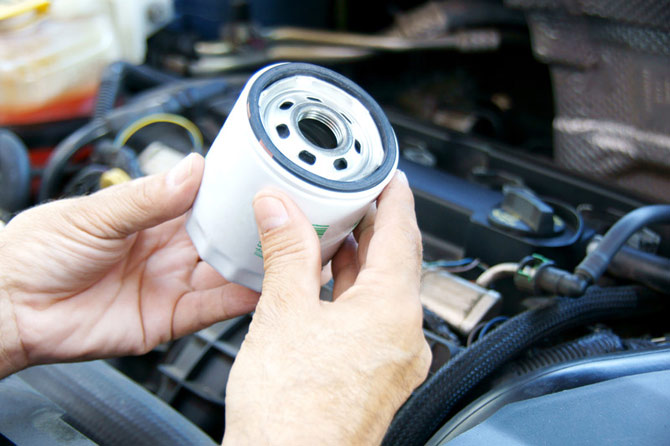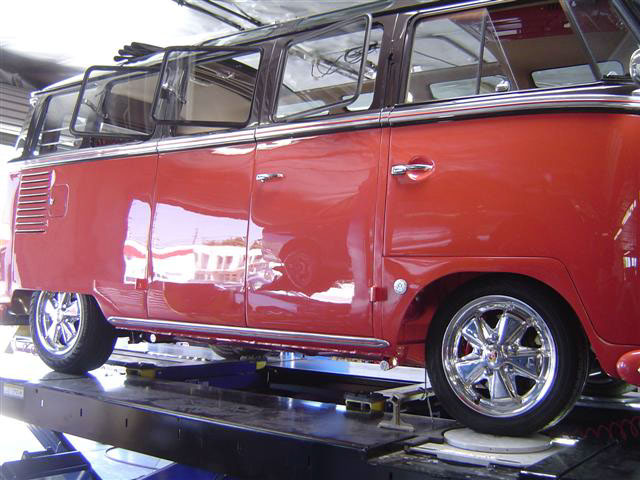
Advanced Computerized Wheel Alignment
Advanced Computerized Wheel Alignment
Domestic to Foreign, All Makes and Models
Is it time for you to check your wheel alignment? When was the last time you checked it? If it’s been a while, then visit All Car and save money by getting an alignment to save your tires. It’s important to check your alignment periodically and mandatory when you buy new tires to avoid throwing money away, All Car would like to explain to you what other shops won’t and why you’ll save money by getting your car aligned properly.
Wheel alignment, sometimes referred to as breaking or tracking, is part of standard automobile maintenance that consists of adjusting the angles of wheels so that they are parallel to each other and perpendicular to the ground. The purpose of these adjustments is to reduce tire wear, and to ensure that vehicle travel is straight and true (without “pulling” to one side). Alignment angles can also be altered beyond the maker’s specifications to obtain a specific handling characteristic. Motorsport and off-road applications may call for angles to be adjusted well beyond “normal”, for a variety of reasons.
You Can Often Tell When Your Car needs an Alignment Once You Understand the Factors
Usually the owner or driver of the automobile can tell it’s a wheel alignment problem without knowing it’s a wheel alignment problem. Pulling to one side or the other, signs of wear on the outer or inner part of the tire. If you hit a large bump it can throw your alignment off and an improper alignment can cause you to wear out your tires very fast. But, there are many other factors you don’t see and as a consumer would not be aware of that can affect your alignment, as explained here.
So, if you’re thinking you don’t want to spend the money on a wheel alignment you should calculate how much the difference would be by buying a new set of tires. And even then, many tire shops won’t warranty your tires unless you do a wheel alignment prior to installing new tires. It would be a waste of money to do so. So, you can either get your alignment checked now and pay once or do it later and pay twice.

The Zero Scrub Radius
The scrub radius is the distance in front view between the king pin axis and the center of the contact patch of the wheel, where both would theoretically touch the road and is the distance at the road surface between the tire center line and the SAI line extended downward through the steering axis.
Steering axis inclination
The steering axis inclination (SAI) is the angle between the center line of the steering axis and vertical line from center contact area of the tire (as viewed from the front).
Caster Angle
Commonly referred to as “head angle”, “rake angle” or “rake and trail.”
When a vehicle’s front suspension is aligned, caster is adjusted to achieve a self-centering action in the steering, which affects the vehicle’s straight-line stability.
Improper caster settings will require the driver to move the steering wheel both into and out of each turn, making it difficult to maintain a straight line.
Excessive caster angle will make the steering heavier and less responsive, although in racing large caster angles are used for improving camber gain in cornering.
Caster angles over 7 degrees with radial tires are common. Power steering is usually necessary to overcome the jacking effect from the high caster angle.
Positive caster angle
Basically, this is referring to ‘Self-Centering’ for Steering Purposes. The explanation is that the pivot points of the steering are angled such that a line drawn through them intersects the road surface slightly ahead of the contact patch of the tire on the pavement.
The wheel casters around to trail behind the axis of steering. This makes a car easier to drive and improves its directional stability (reducing its tendency to wander).
Excessive caster angle will make the steering heavier and less responsive, although in racing large caster angles are used for improving camber gain in cornering.
Caster angles over 7 degrees with radial tires are common. Power steering is usually necessary to overcome the jacking effect from the high caster angle.
Trail or Trailing
The steering axis (the red dotted line in the diagram) does not have to pass through the center of the wheel, so the caster can be set independently of the mechanical trail. This is the distance between where the steering axis hits the ground, in side view, and the point directly below the axle.
The interaction between caster angle and trail is complex, but roughly speaking they both aid steering. The caster tends to add damping, while trail adds ‘feel’, and return ability. In the extreme case, such as the caster wheel on a shopping trolley, the system is unhampered but stable, as the wheel oscillates around the ‘correct’ path. The shopping trolley/cart setup has a great deal of trail, but (somewhat confusingly) no caster.
Complicating this still further is that the lateral forces at the tire do not act at the center of the contact patch, but at a distance behind the nominal contact patch. This distance is called the pneumatic trail and varies with speed, load, steer angle, surface, tire type, tire pressure and time. A good starting point for this is 30 mm behind the nominal contact patch.
Camber Angle
Camber Angle is the angle made by the wheels of a vehicle; specifically, it is the angle between the vertical axis of the wheels used for steering and the vertical axis of the vehicle when viewed from the front or rear. It is used in the design of steering and suspension. If the top of the wheel is farther out than the bottom (that is, away from the axle), it is called positive camber; if the bottom of the wheel is farther out than the top, it is called negative camber.
Camber angle alters the handling qualities of a suspension design, negative camber improves grip when cornering. This is because it places the tire at a better angle to the road, transmitting the forces through the vertical plane of the tire rather than through a shear force across it. Another reason for negative camber is that a rubber tire tends to roll on itself while cornering.
As you can see by some of this technical jargon on just this one component, there are many factors that need to be aligned to keep the tires from wearing out faster.
Toe
In automotive engineering, toe, also known as tracking, is the symmetric angle that each wheel makes with the longitudinal axis of the vehicle, as a function of static geometry, and kinematic and compliant effects. This can be contrasted with steer, which is the ant symmetric angle, i.e. basically, both wheels point to the left or right, in parallel.
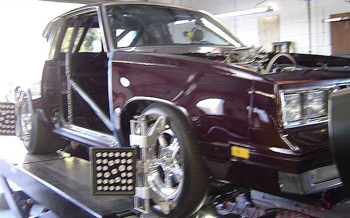
All Car Specialists measures Wheel Alignments electronically with the most advanced technologies as shown here.
Kingpin
The kingpin axis is the line between the upper and lower ball joints of the hub. On a MacPherson strut, the top pivot point is the strut bearing, and the bottom point is the lower ball joint. The inclination of the steering axis is measured as the angle between the steering axis and the center line of the wheel.
This means that if the camber angle is adjustable within the pivot points the scrub radius can be changed. This alters the width and offset of the tires on a vehicle and any variation away from what is technically accurate can and will cause tire wear and affect handling.
For additional questions about computerized wheel alignment, call us or come in to our repair shop in San Gabriel on Del Mar.
